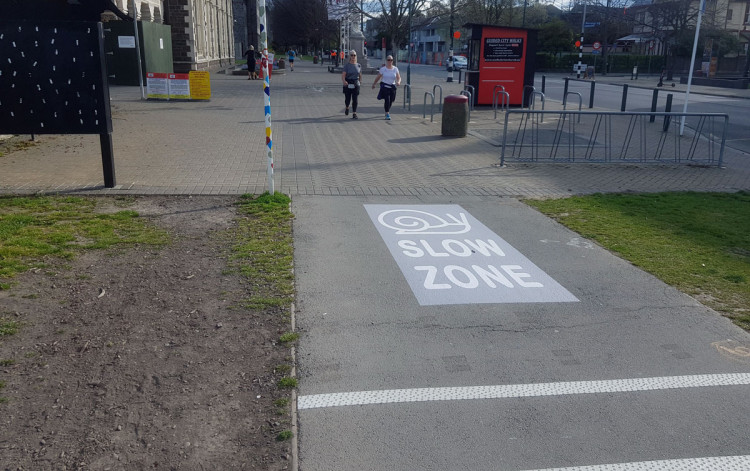Shared use paths are often implemented as a way of improving a connection for people on bikes, however the needs of all people that are expected to use the facility should be considered.
Because I cannot see who is coming, it can be scary using shared paths. I feel the occasional fast cyclist whizz past, and if the path is narrow, it makes me very anxious, so I tend to avoid narrow shared paths. |
Just as separating vehicle traffic and bicycle traffic on the roadway can improve safety, comfort, and attractiveness, whilst reducing risk, this approach can also be applied to separating out those travelling by bicycle and pedestrians using a pathway.
Some pedestrians will avoid using shared paths because of anxiety about interactions with cyclists, so their installation should be limited. Some people (for example people who are blind or have low vision) can find it difficult to use shared paths as markings do not provide suitable guidance as to where they should walk. In all cases, options to provide a fully separated path should be considered first.
There are four ways that users can be accommodated on paths:
Examples of different shared path types are shown in the Cycling Network Guidance.
Cycling Network Guidance: Design of shared paths
Depending on the location context, building a new shared path may prove popular among many users. Conversely, retrofitting an existing footpath for shared use may reduce the level of service and safety for pedestrians.
Shared paths may be appropriate in one or more of the following situations:
There are circumstances where even with a low level of pedestrian use shared paths are not appropriate and alternative approaches need to be considered.
It may not be appropriate to consider a shared path in these circumstances:
Should a shared path be pursued, the Cycling Network Guidance (CNG) gives further guidance on the design of shared paths, including appropriate widths.
Cycling Network Guidance: Design of shared paths
Collisions between pedestrians and cyclists on paths are comparatively rare. Nevertheless, some pedestrians perceive a danger from cyclists due to their speed and quietness, and may feel intimidated by them.
Conflict can be avoided through best practice path design (eg appropriate widths) and design that makes appropriate user behaviour more intuitive.
In some situations, a specific marking (or sign) may help remind people of a particular behaviour required to make the path safe and enjoyable for all people using it. However, some people feel intimidated by warnings. Even when all measures have been taken to make shared paths more comfortable for all people separate paths for pedestrians and faster moving users such as people cycling are preferable.
Cycling Network Guidance: Path behaviour markings [PDF, 1.7 MB]

Slow zone marking where a shared path transitions to a shared zone, Christchurch. (Photo: Glen Koorey)
Care should be taken where shared paths follow routes where historic and cultural heritage exists. The Considering historic heritage in walking and cycling projects information sheet provides guidance on heritage considerations in walking and cycling projects.
Considering historic heritage in walking and cycling projects